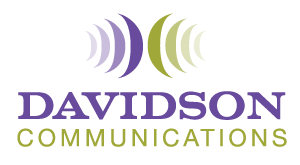
Infertility Advertising: Show Me the ROI
Posted in BlogEenie, meenie, miney mo, which advertisement is a go?
One of the most confusing aspects of running a marketing program is figuring out which advertising vehicles will give you the best return on investment while simultaneously attracting new patients/clients and branding your company.
On any given day, the person in charge of advertising for your clinic or agency can be bombarded with sales pitches for radio, television, Internet, search and/or specialized infertility print or Web ads. Because no provider’s advertising budget is unlimited, trying to sort the options can be overwhelming. And some of those sales people can be pretty persuasive in convincing you that they are selling the magic advertising pill to get patients/clients/surrogates/donors lining up at your door. But like all aspects of successful marketing, your advertising strategy should start with a cohesive plan. To help make that happen, here are a few guidelines to inform your work:
1) Know where advertising fits into your overall marketing plan: For a clinic, advertising might come in third as a major referral category after physician and patient referrals while a surrogacy agency may depend on advertising to attract 90% of its surrogate applicants. For the former, remember that advertising will not only generate separate interest but also will help reinforce physician and word-of-mouth strategies.
2) Develop a budget: This is where it can complicated: determining how much money your organization should spend on advertising. There is probably no one correct way to calculate your budget, but it is helpful to understand important indicators like sales volume, margin and markup. Many traditional formulas tend to focus on location as an important variable and this strategy generally is not as crucial to fertility providers as it is to brick and mortar stores. Also think of advertising as an investment, not just an expense. Business.com has a helpful article that provides a few different budgeting formulas. Remember, having a budget helps you from being swayed too easily by that really tempting sales pitch.
3) Determine the right advertising mix: Understanding the demographics of your intended audience is another key element in a successful plan. Most fertility clinics will want to focus on local advertising options, as well as national venues that allow geographic targeting while a third party agency, laboratory or pharmacy has national markets. There are many new infertility advertising vendors who are specifically focusing on the infertility, pregnancy, pre-conception or surrogacy markets.
4) Understand the pros, cons and differences between inbound and outbound advertising: Before the advent of the Internet, advertising options were limited to radio, television, print and outdoor media. These options broadcast a marketing message outward to broad groups of people who happened to tune in or read these types of media. Though these forms can work well if they are accurately targeted for a local or regional audience, they also reach a lot of people who have no interest in your product or service at the moment. Educating the public is not necessarily a bad thing, but may not be the most efficient use of your advertising dollar, especially if your budget is limited. An outbound marketing campaign with the goal of branding should be coupled with newer, inbound marketing forms like search engine advertising (Google AdWords, Bing, Yahoo), Facebook and infertility specialty advertising and social media strategies that will put your service and brand in front of the people who are actively searching for what you have to offer.
5) Have goals: Can you afford to spend money on advertising that will mainly brand your organization? Do you need to immediately attract patients, surrogates, intended parents or egg donors? Are there ads that can do both? Be realistic about your goals, which creating a plan will help you do.
6) Track your advertising campaign! All too often I have seen advertisers fail to ask the simple question: How did you hear about us? So please don’t spend your hard-earned money on advertising, but fail to retrieve the necessary statistics to measure its effectiveness and ROI.
The Internet and social media have opened up a world of new possibilities in which to advertise to potential patients, egg donors, surrogates, referral sources and customers. Even traditional media (newspaper, radio and television) has moved online. I hope these guidelines will help you navigate the sea of options that are available to today’s fertility businesses.








